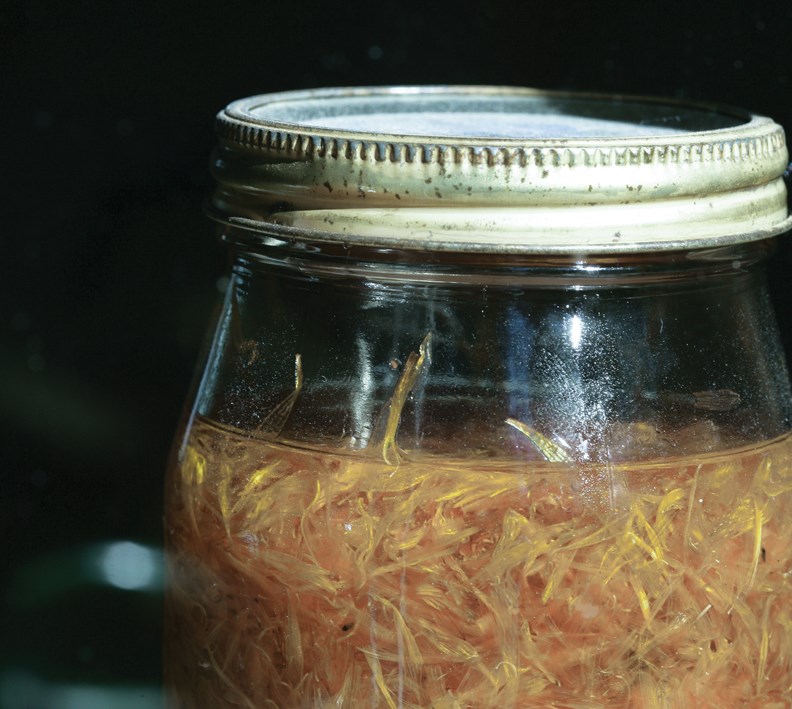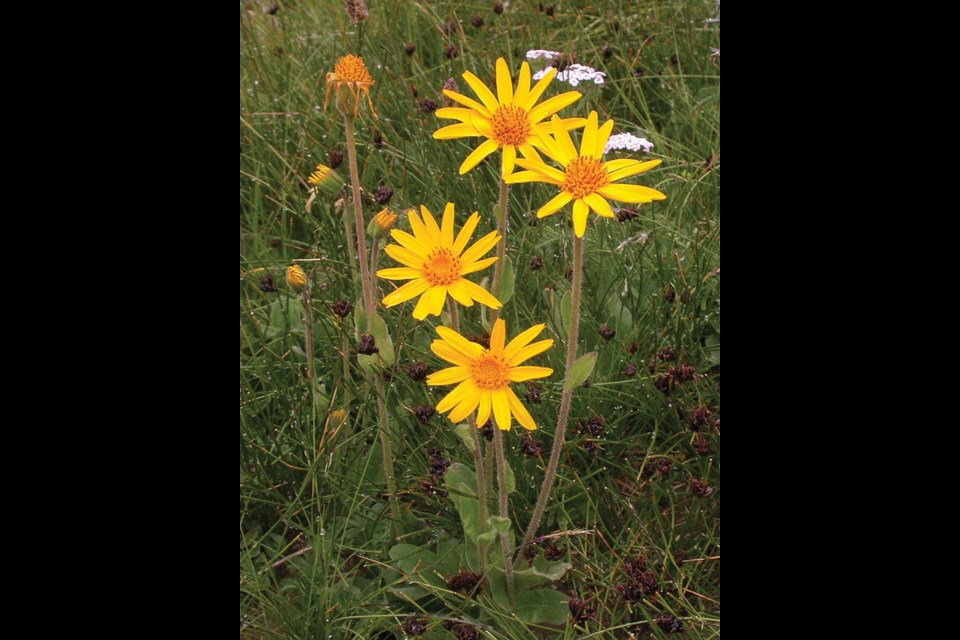Last year ended with a bang for me – literally – as I slammed the garage door shut with my fingers in it on New Year’s Eve. While relieved that the tips of my digits emerged intact, I was taken aback at how profusely the pain, swelling and profanity ensued.
Two of my fingers started to resemble purple lollipops, so I held them up for inspection and sympathy, wide-eyed and slightly in awe of the scene.
A friend, who was witness, put things bluntly.
“You look like E.T.”
Another, slightly more helpful friend, suggested two things: an ice pack and arnica cream. The ice pack was obvious, but I had completely forgotten about the amazing healing powers of arnica, a humble flower.
With my crushed hand swaddled in a bag of frozen peas, I searched the medicine cupboard for the arnica salve that had helped with my last major mishap, a bad ankle sprain.

Arnica montana is a medicinal herb harvested primarily for its flowers. It is native to Europe and is also known to grow in British Columbia, Washington and Alaska, along with other species of arnica which have similar healing properties.
Now available widely at health food stores and pharmacies, you can find arnica concoctions in creams, sprays, gels and homeopathic tablets. It is indicated for use by adults, plus children over the age of three. Arnica is usually applied topically and can be toxic if ingested, so follow instructions carefully.
Applied to the skin, arnica is fast-acting and soothing. The products relieve muscle and joint pain (from exercise, for example) and also help resorption of bruises and inflammatory swelling (edema) caused by blows, falls, blunt injuries and even surgery.
By the time I found the arnica cream, my fingers were pulsing, bruised and blue. With regular application of the cream, the swelling decreased over several hours and the bruising discolouration was lessened, disappearing completely (except for my sad, purple fingernails) in just three days.
Once wild crafted, arnica is now mostly cultivated for medicinal applications. You can grow arnica from seed in gardens on the Coast (Salt Spring Island Seeds is one source). To make your own arnica oil, place dried arnica flowers in a clean glass jar and cover with olive, grapeseed or almond oil. Allow to infuse for four weeks and then strain the oil in cheesecloth, squeezing the flowers to release all the healing properties. Label and store carefully. If you are clumsy and/or prone to bruising like me, stocking arnica salve, gel, oil or cream as part of your household healing kit is a very wise idea.



